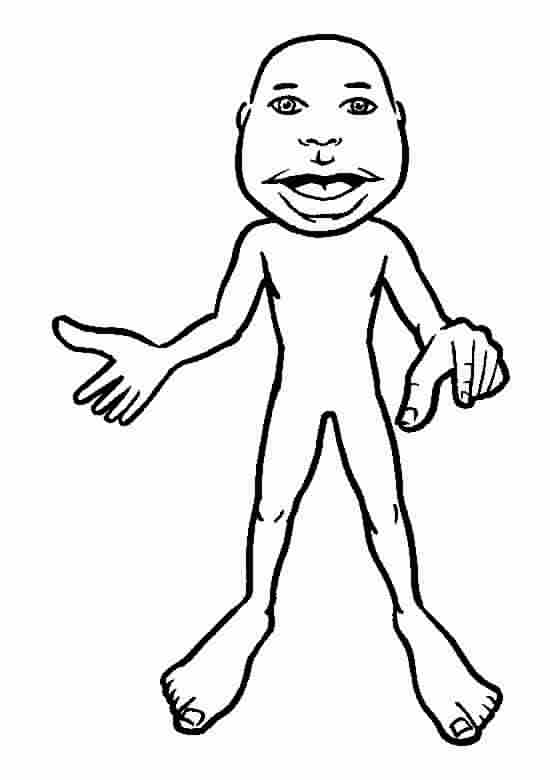
Brain. 1. A distorted human figure drawn to reflect the space our body parts occupy on the sensory and motor cortex. 2. A misshapen "little man" whose swollen lips, hands, and feet reflect the disproportionately large cortical areas they occupy.
Usage: The comically enlarged tongue, lips, and fingertips of the human homunculus explain why these body parts play key roles in nonverbal communication. The meaning of lip-touch, e.g. (as a hypersensitive, self-stimulating gesture to relieve anxiety)--is easily grasped from the "brain's-eye" view of the homunculus. Boots, french fries, high heels, self-touch gestures, and the tongue-show, e.g., may be decoded from its viewpoint as cortically meaningful signs.
Neuro-notes. 1. "Almost every region of the body is represented by a corresponding region in both the primary motor cortex and the somatic sensory cortex" (Geschwind 1979:106). 2. "These cortical maps of the body surface and parallel motor maps are important and explain why neurology has always been a precise diagnostic discipline . . ." (Kandel and Jessell 1991:372). 3. "The finger tips of humans have the highest density of receptors: about 2500 per square centimeter!" (Kandel and Jessell 1991:374).
See also HUMAN BRAIN.
Copyright 1998 - 2016 (David B. Givens/Center for Nonverbal Studies)
Drawing by son Aaron M. Huffman, Harvey Danger
bass guitarist (copyright 2003 by Aaron M. Huffman)